#shaw brothers studios
Explore tagged Tumblr posts
Text
I put together some Lo Mang and Kuo Chui duo/not-duo clips🐸🦎ft. Chiang Sheng. Obviously there is limited content to use on youtube, so sad
#it's a bit glitchy but oh well#venom mob#shaw brothers studios#lo mang#kuo chui#philip kwok chun-fung#chiang sheng#kung fu#70s kung fu films#martial arts#ten tigers of kwangtung/kuontong#rebel intruders#crippled avengers#shaolin rescuers#song by Chen Yin Jie 1982#what even is this#crappy edits#clips do not belong to me
8 notes
·
View notes
Text
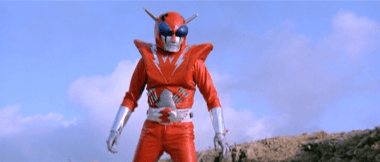
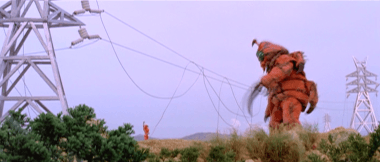


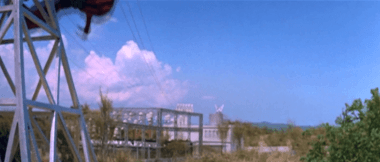
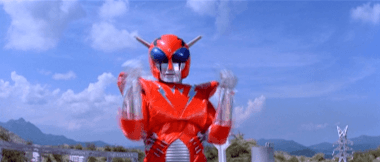


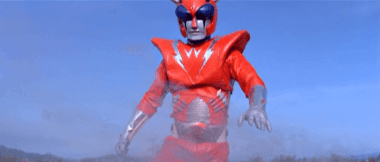
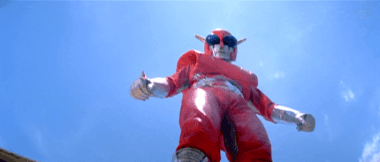
The Super Inframan (1975)
#the super inframan gif#infra-man gif#70s sci-fi#tokusatsu#kaiju#shaw brothers studio#hong kong movies#giant monsters#danny lee#hua shan#70s movies#seventies#1975#gif#chronoscaph gif
146 notes
·
View notes
Text










24 notes
·
View notes
Text



Cheng Pei-pei (6 January 1946 – 17 July 2024)
6 notes
·
View notes
Text
The Deets on The Shaw Brothers Classics, Volume 6 and Why This Release Is A Must-See
Yes, I'm a fan of the #wuxia films that Shaw Studios pumped out way back when, and I'm glad @Shout_Studios has two special collections coming. The next voi is due in March #bluray #news #martialarts and here's some deets:
Pre-order now on Amazon USA What’s next for Shout! Studio‘s continued release of films from China is Shaw Brothers Classics, Vol. 6. Fans can now pre-order this upcoming March release, and according to the marketing, this package will focus on the really hard to find films to watch. Since then, a quick check online shows that some of them are available on Amazon Prime (select countries) as…

View On WordPress
0 notes
Note
So, a friend of mine on Discord said something interesting, and I feel like you might have thoughts on it. So. What do you think of the idea of the Teenage Mutant Ninja Turtles as being "The Shaw Brothers for kids", a sort of gateway drug for "the kung fu genre"?
Not the Shaw Brothers, but Golden Harvest. Let me explain:

I’m going to sound like a conspiracy theorist when I say this, but I believe the New Line Cinema “Teenage Mutant Ninja Turtles” (1990) movie was actually a money laundering scheme by the Chinese Mafia, specifically, the Sun Yee On Triad.
Looking into the role of organized crime in martial arts cinema is a rabbit hole that goes very, very, very deep...and comes out somewhere very shocking at the end.

You mention the Shaw Brothers, but there was another Hong Kong Producer who was the only credible rival to the Shaw Brothers (and who eventually surpassed the Shaws) in martial arts movies: Golden Harvest’s Raymond Chow….a man who started off as the Shaw Brothers’ talent division, but who eventually founded his own rival studio to the Shaws (with rumored triad financial backing), and who made Bruce Lee, Angela Mao and Jackie Chan stars. Raymond Chow is widely, and extremely credibly, believed to be a middleman for the Hong Kong Triad, the Sun Yee On, who used Golden Harvest as a front facing money laundering scheme, as claimed by Frederic Dannen in "Hong Kong Babylon," and Yiu Kong Chiu in "The Triads as Business," books I recommend if you are at all interested in the topic of organized crime in the Hong Kong film industry.
Raymond Chow was also the producer and primary funder of the Teenage Mutant Ninja Turtles movies. I mean, what does it mean when your movie is entirely produced and funded by a guy well known for being a triad middleman and money launderer?

And all of this happened at New Line Cinema, a borderline independent film company…one known for having dodgy financials it’s entire existence, no less, which ultimately doomed it? One of the most extraordinary things about the 1990 Ninja Turtles movie is that it was, essentially, an independent film. New Line would later become a powerhouse as a studio and created Lord of the Rings, but at the time, it was a mainly low rent operation, rather like Cannon films, known for the success of the slasher series “Nightmare on Elm Street.” So yes, I do believe "Teenage Mutant Ninja Turtles" (1990) was a money laundering scheme by the Chinese Mafia.

The triads in Hong Kong, Macao, and Taiwan take enormous interest in financing martial arts movies for the same reason that they take a tremendous interest in financing porn movies: they’re quick, cheap, dirty, and can be used as a mechanism for laundering money, and a way to claim money from illegal sources (say, heroin) comes from a clean and legal source that can be claimed on taxes, like say, a movie studio. In addition, Hong Kong’s strict rating system, the Category III (equivalent to a far stricter R-rating) meant that very violent movies were handled in ways that were outside the law in ways similar to pornography. And according to several Senate investigations in 1991 ("Hearings on Asian Organized Crime"), the triads were actively involved in money laundering as well outside of Hong Kong, including currency trading and real estate, and the idea they could back a studio is entirely possible.

Everyone working in Hong Kong cinema has a story of dealing with the triads, who are interwoven into the city. Anita Mui's manager was was shot dead by mafiosos. Jimmy Wang Yu, the first Kung Fu star, was a suspected member of the Bamboo Union triad, and once borrowed money from one triad to pay another....and may have used his reported connections with the Triads to get Jackie Chan out of his initial contract with Golden Harvest, a favor Jackie repaid. Golden Harvest studios were actually firebombed in 1984, an event suspected to be due to Triad activity. Raymond Chow’s fellow producer and good friend who discovered Steven Chow, film producer Charles Heung, is well known to be the son of Heung Chin, who founded the Sun Yee On Triad, the largest in Hong Kong with over 25,000 members. And you don’t have to take my word for it; a US Senate Committee in 1991 on Asian Organized Crime identified Cheung as a leader of the Sun Yee On along with his brothers. Because of his association with Charles Heung and the Sun Yee On, Steven Chow, director of Kung Fu Hustle, cannot enter Canada legally.

Jackie Chan asserted Raymond Chow’s triad connections in his autobiography, and also claimed that he only hired triad members and other people who were mobbed up at Golden Harvest. One example would be producer Ng See Yuen, who produced Once Upon a Time in China for Golden Harvest, and who Jet Li refused to work with ever again after his manager was assassinated by triad gunmen (Jet Li blamed Ng See Yuen for his manager's death).
There's also Lo Wei, a Shaw Brothers director and known “Red Pole” enforcer of the Sun Yee On Triad, who came over to Golden Harvest, where he directed Bruce Lee’s Chinese Connection and Big Boss, and also directed Jackie Chan’s earliest “period” historical movies for GH. Jackie Chan, in his autobiography, stated that the reason he initially left Hong Kong to go to the United States for an American career was because Lo Wei, his director on Laughing Hyena, put a hit out on him for refusing to make Laughing Hyena 2, and Jackie had to flee the city when Lo Wei sent gunmen to his house to abduct him. When arriving in the United States, he had to avoid some men with machine guns at the airport. To this day, whenever possible, Jackie Chan goes out in public armed for fear of gangsters.

Even Jackie Chan though, never made the assertion that Raymond Chow and the Sun Yee On had Bruce Lee killed. This is important to mention because if you talk to any Chinese person, nearly all of them believe with unshakable, absolute certainty that the Chinese Mafia killed Bruce Lee, which is literally the plot of Game of Death (which, incidentally, Raymond Chow produced). Everyone around Bruce was mobbed up, because everyone in the Hong Kong film industry was mobbed up; in fact, it’s an open question how much it existed for its own sake. It’s notable Bruce Lee died at the home of Betty Lo Ting Pei, Golden Harvest actress, and his known mistress…who was married to a triad gangster. It’s also known that the first person that Betty Lo Ting Pei called when Bruce died was not medical services but Raymond Chow, something that to this day, she has not attempted to explain.

It can be hard to imagine what the motive is for Raymond Chow and the triads to kill Bruce Lee. After all, wouldn’t Bruce Lee be more useful to Raymond Chow alive than dead? I never saw the angle, here. But then, you consider that in the last few months of his life, Bruce Lee started to set the stage for his transition to behind the scenes roles like producer, and was assembling a lot of stunt talent around him (a lot of productions down the pipeline intended to have Bruce Lee in producer roles, like Circle of Iron). The rumor among the stunt players, as recounted by Sammo Hung, was that Bruce was attempting to form his own stunt and film production company (as Chiba later did successfully in Japan) and that would involve organizing and peeling off half the talent in Hong Kong….in a deeply triad controlled industry, no less. There was also a story recounted by witnesses that Bruce Lee, a temperamental and explosively violent man, physically assaulted Raymond Chow in his office with punches and kicks when he heard Chow had two sets of books in their shared production company, as Bruce was always keen to keep the triads out of his films. Ten days later, Bruce Lee was dead. And for weeks before his death, Lee told his friends "Hong Kong is getting too hot, I have to get out."
And you know something? A Ninja Turtles movie from 1990 is probably the least of it. In 2020, a few documents were declassified by the Taiwanese government that showed that the members of the Bamboo Union Triad had 19 top governmental positions in Taiwan from 1955-1984 (the era when Taiwan was in a complete state of military rule), including the National Security Bureau and all branches of the armed forces. In other words, Taiwan during the military rule era wasn't just corrupted by the triads, the triads were the government.
I never cease to be amazed at the incuriousness of the journalistic professions. Governments don't declassify documents - especially something as damning as triad involvement in government - unless they have to. So why would the Tsai Ing-Wen government reveal this now in 2020, especially when anti-corruption is the driving force of Taiwanese politics, and anti-corruption sentiment pushed the KMT out of power since the 90s? Outsiders believe that the single biggest question in Taiwanese politics is their relationship with the mainland. Kinda...the status quo is more or less a settled question. It's actually anti-corruption and anti-triad infiltration, which is why the DPP are the ruling party now.
The answer, I suspect, is that the triads are no longer working with the Taiwanese government, but with the mainland government. In the 1980s, Wong Man Fong, editor of the Xinhua paper of Hong Kong, said in several interviews he was asked by the People's Republic of China to reach out to the triads to help make a deal: no government interference in their activities, if they pledge to keep order in the city after the handover in 1997. I strongly suspect the mainland now has a similar arrangement with the Bamboo Union, Green Gang, and the Si Hai Bang they did in Hong Kong, especially since so much money is going back and forth with the release of trade to the mainland. In other words, the triads in Taiwan are active agents of the PRC.
Backdoor deals between government and the mob aren't out of the question, just ask the CIA, who used Giancana Crime Family assassins sent to kill Castro as a key plank of the Bay of Pigs Invasion, the role of the mafia in the Kennedy Assassination, or how control of opium was a key under-the-table reason for the invasion of Afghanistan.

What I suspect happened is, the Taipei government is turning on organized crime now after decades and decades of ludicrous and obvious corruption, because to the triads, the money to be made with the mainland and unification is far more lucrative. It's no coincidence that the largest pro-unification party in Taiwan is led by a triad gangster who spent time in jail for racketeering, Chang An Lo, nicknamed "the White Wolf." Like John Gotti, everyone knows he's a mobster and that's even part of the White Wolf's coolness and appeal (if you could vote for Tony "Scarface" Montana, boy, I bet a lot of guys would), but nobody can touch him. In fact, combined with how the "light world" financial institutions are intertwined along with the underworld, there's an argument to be made that the reason the PRC hasn't tried to take Taiwan is that for all intents and purposes, they already have it.
In other words, the triads have gone from using the Ninja Turtles to money launder to essentially setting global geopolitics.
215 notes
·
View notes
Text
FC Acting AU
UPDATE: Read it Here!
Hear me out:
Charles Xavier is a big name in acting who is constantly flipping through a year or two of teaching then making blockbuster and TV hits.
Erik Lensherr is an ex-theater actor who is serious about his work and very much against falling in love with coworkers and being anymore more then just barely work friends.
Emma Frost is an industry giant and the starlet under a annoyingly harsh contract from Hellfire Entertatinment Co. She lets herself get looped into Charles's newest project.
Moira MacTaggert is a director who is always working with a dozen projects and loves the hectic appeal of tight deadlines and on sight filming. She, for better or for worse, agreed when Charles got a bright new idea.
What was that bright new idea: A sitcom style show about young adult superheros finding their way in the world. Under the guise of him, and facing lifes challenges and also super villains hunting them down.
Interesting, but the part of the plan Charles didn't share with the others or the studio was the fact he was dragging the tallent in from Absolutely Nowhere. The First Class kids, only 2.5/6 of them act. 3 if you count a highschooler in theater.
Including:
Alex Summers, barely finished highschool and forced to do theater during in it (that being where he met Charles). Just trying to live his life in the miserable broody way he always had when he gets practically swindled into this show.
Armando Muñoz, actually going into acting or at least trying to. Alex's classmate and closest friend, one that was happy to do this Responsible and sensible, unlike most of them.
Angel Salvadore, scooped up from shady club by Charles when she was 18. Fiery attitude and a total lovebug who happily jumped on the chance to get a real start in a real industry instead of just studying for her GED.
Raven Darkholme, Charles's sister who watched him plan this whole thing. Sass and insecurity that knows to get the job done and is excited for a chance to have a bigger role then her brother in something for once.
Sean Cassidy, a highschool student of Charles's until he bailed out for this that got dragged along. Chill vibe, down for the ride, no idea what's happening but he's gonna have fun doing it!
Hank McCoy, trying to get his bachelors in acting and student teaching at a middle school whe Charles Xavier is like 'no no no, real jov for you'. Shy, shy, and shy. Acting being his main escape from that.
The drama that ensues when these people get brought together on a tv show thats soon to be a hit! Will Charles continue to piss off Shaw in every way possible? Will Moira be able to wrangle such an inexpierenced cast? Will these young adults manage to keep it profesional? Will these not at all young adults manage to keep it proffesional? Will Shaw cacnel them off the air when they just keep getting more progressive and less caring what he says? Who knows!
Things Just Got More Interesing
WIP Fic. Planned 7(?) Chpt Fic
X-men FC TV Show/Acting AU
Featuring: Cherik, Emmoira, Halex, and Rangel. (+Janzazel but that might just be a me thing)
#x-men#x-men fanfiction#x-men first class#fanfic#writing#erik lehnsherr#charles xavier#ao3 fanfic#cherik#acting#tv shows#x men au#emmoira#moira mactaggert#emma frost#halex#hank mccoy#alex summers#rangel#raven darkhomle x angel salvadore#angel salvadore#raven darkholme#armando muñoz#sean cassidy#TJGMI
45 notes
·
View notes
Text
THIS DAY IN GAY HISTORY
based on: The White Crane Institute's 'Gay Wisdom', Gay Birthdays, Gay For Today, Famous GLBT, glbt-Gay Encylopedia, Today in Gay History, Wikipedia, and more … December 13



1904 – The Iowa Supreme Court rules that "irresistible insane impulse" is a possible defense against a charge of sodomy.


1904 – Glen Byam Shaw (d.1986) was an English actor and theatre director, known for his dramatic productions in the 1950s and his operatic productions in the 1960s and later. Created CBE in 1954, he also received the Hon DLitt of the University of Birmingham in 1959.
In the 1920s and 1930s Byam Shaw was a successful actor, both in romantic leads and in character parts. He worked frequently with his old friend John Gielgud. After working as co-director with Gielgud at the end of the 1930s, he preferred to direct rather than act. He served in the armed forces during the Second World War, and then took leading directorial posts at the Old Vic, the Shakespeare Memorial Theatre and Sadler's Wells (later known as the English National Opera).
Byam Shaw was born in London, the youngest of five siblings. He was educated at Westminster School, where his contemporaries included his elder brother, James Byam Shaw, later a well-known art historian, and John Gielgud, who became a lifelong friend and professional colleague.
Byam Shaw's first appearance was at Torquay in the west of England, in C. K. Munro's comedy At Mrs. Beam's. In 1925 he made his London debut, playing Yasha in J.B. Fagan's production of The Cherry Orchard, in a cast that included Alan Napier as Gaiev, O.B. Clarence as Firs and Gielgud as the young student Trofimov. Over the next few years Byam Shaw appeared in three more plays by Chekhov, and in plays by Strindberg and Ibsen. He made his New York debut in November 1927 as Pelham Humphrey in And So To Bed.
Actress Constance Collier was impressed by Byam Shaw and used her influence to gain him roles. Among those to whom she introduced him was Ivor Novello, then a leading figure in London theatre. She directed them both in the play Down Hill in 1926. Byam Shaw and Novello became lovers for a short time. This drew him into contact with the poet Siegfried Sassoon, another friend of Collier; he and Byam Shaw became close. Their friendship lasted for the rest of Sassoon's life, although they ceased to be sexual partners quite quickly; Sassoon became involved with Stephen Tennant, and Byam Shaw fell in love with an actress, Angela Baddeley. They married in 1929. The marriage, which lasted until her death in 1976, was, Denison writes, "a supremely happy one, both domestically and professionally"; the couple had a son and a daughter.


1912 – England requires flogging for a second violation of the 1898 law prohibiting Gay solicitation.


Peter Dorey (L) with Ernest Cole
1947 – Peter Dorey (d.2021) was the co-founder of Gay’s the Word, the first bookshop in the UK dedicated to selling books and magazines for the LGBT+ community.
Dorey founded the shop in Bloomsbury, central London, together with Ernest Hole and Jonathan Cutbill, in 1979. Naming the shop after the Ivor Novello musical, the trio aimed to provide a safe space where LGBT+ people could meet and share a love of books, including many titles that were not available elsewhere.
Peter Dorey was born in 1947 in London to Frederick and Irene Dorey and educated at Preston Manor Grammar School in Wembley. Whilst at the University of Leeds he became interested in broadcasting, working for the student radio station on campus. Upon graduating he joined the BBC as a sound engineer, spending more than 20 years at studios in Belfast and Bristol. It was at a meeting of Gay Icebreakers, a social group, that he and his colleagues came up with the idea of a specialist bookshop for the LGBT+ community, with Dorey providing the funding.
During the miners’ strike of 1984-85, the bookstore became the meeting hub for Lesbians and Gays Support the Miners (LGSM), a group which raised funds for striking coalminers in south Wales. Their story is celebrated in the film Pride (2014), directed by Matthew Warchus.
As the subject of long-term surveillance and institutional homophobia, Gay’s the Word was raided in 1984 by HM Customs and Excise, which claimed that “indecent or obscene” material was being held there. Thousands of pounds of stock was removed by Customs officers whilst Dorey and his colleagues were charged with conspiracy to import indecent books, under the archaic Customs Consolidation Act of 1876.
Questions in parliament from Chris Smith and Frank Dobson and pressure from campaigners forced a review of the case. A crowdfunding campaign raised £55,000, including £3,000 donated by the author Gore Vidal. Smith came out as Britain’s first openly gay MP a few months later. The charges against Dorey and his co-directors were eventually dropped.
Dorey met Timothy Groom in 1985 and they were partners until Groom's death in 2010.


1948 – Tom Walmsley, born in Liverpool, England, is a Canadian playwright, novelist, poet and screenwriter.
Born in Liverpool, Walmsley came to Canada with his family in 1952, and was raised in Oshawa, Ontario, and Lorraine, Quebec. He dropped out of high school and battled addictions as a young adult.
In addition to his plays, Walmsley was the winner of the first Three-Day Novel Contest in 1979 for his novel Doctor Tin. He later published a sequel, Shades, and another unrelated novel, Kid Stuff. Walmsley wrote the screenplay for Jerry Ciccoritti's film Paris, France in 1993. Ciccoritti also later adapted Walmsley's play Blood into a film.
Walmsley's style of writing ranges from the naturalistic to the poetic and, at times, the absurd. He moves easily between dramatic and comedic, and some of his "darkest" work is treated with a cutting sense of humour. His most common themes include sex (both hetero- and homosexual, often involving sado-masochistic fetishes, adulterous affairs, and, in the case of Blood, incest), violence, addiction (to alcohol and heroin in particular), and God (from a Christian perspective). He rarely deals with politics directly, although he openly displays a distaste for middle-class morality and social conservative interpretations of Christianity.Early in his career, Walmsley summarized his sense of personal identity as "blond, stocky, below average height, uncircumcised, bisexual, tattooed, with bad teeth and very large feet".


1975 – Lionel Baier, born in Lausanne, is a Swiss film director. He began his career with a short called "Good Enough To Eat" and two docs: one for Swiss television called The Pastor, the other about gay pride in the Valais.
At 28 he released his first feature, a breakout festival hit, Garcon Stupide, about a confused, uneducated, perpetually frisky 20 year-old named Loic who wants more than the quick tricks he turns with older men on the streets of Lausanne. The marketing department tried to sell Baier's follow-up, Stealth, as another gay romp but the character's main preoccupation is coping with the discovery that his family's background is Polish, which leads to a road trip, which leads to a providential hookup.
In 2009, Baier made Another Man about a straight writer who stumbles into a job as a small-town newspaper movie reviewer For something different, the next year Baier shot Low Cost on his cell phone in a month. Low Cost is a 60-minute drama about a 34 year-old who knows when he's going to die. In 2013 he released Great Waves, his first period drama, set in April 1974 during Portugal's Carnation Revolution.


1990 – Anton Hysén is a Swedish footballer who plays in the Swedish third division for Utsiktens BK, which is coached by his father Glenn Hysén. He is a former member of the Swedish national under-17 association football team and was given a trainee contract with BK Häcken from 2007 to 2009,[3] but was hindered by injuries and instead joined Utsiktens BK, for whom he plays in his third season. He was previously a member of Torslanda IK. His older brothers are football players Tobias Hysén (half-brother) and Alexander Hysén. He won the seventh season of Let's Dance, being the first openly gay person to win this competition.
He came out as gay to the Swedish football magazine Offside in March 2011. Daily Mail has described Anton as the "first high-profile Swedish footballer to announce that he is gay" and as the second active professional football player to come out, after English footballer Justin Fashanu in 1990. The BBC called him "a global one-off".
Hysén was profiled on Swedish broadcaster TV4 on March 9, 2011, in a debate show moderated by Lennart Ekdal titled "Can gays play football too?".
He works part-time as a construction worker.


1999 – US Defense Secretary William Cohen ordered a full review of the "Don't ask, don't tell" policy. The policy had recently been criticized for creating a hostile environment.


2002 – The Belgium Senate approves same-sex marriage, making Belgium the second country to do so.


21 notes
·
View notes
Text
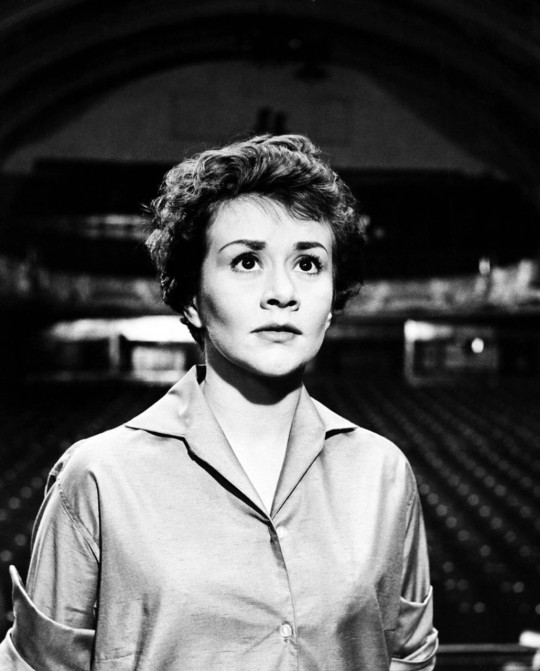
Dame Joan Plowright
Stage and screen star who was part of a radical generation of actors responsible for establishing the National Theatre
Joan Plowright, who has died aged 95, played a central role in the historic overhaul of British theatre at the Royal Court in the late 1950s. A founder member of George Devine’s English Stage Company in 1956, she made her name as Beatie Bryant, the working-class heroine in Arnold Wesker’s Roots in 1959, and married Laurence Olivier in 1961. The union of Plowright and Olivier was symbolic of the new theatre order embracing the old glamour, as the greatest actor of the day threw in his lot with the younger generation.
Olivier had scored one of his biggest successes as Archie Rice, the dying music hall star, in John Osborne’s The Entertainer at the Court in 1957. When the play transferred to the West End and Broadway, Plowright took over from Dorothy Tutin as Jean Rice, Archie’s daughter, and their friendship ripened into an unshakeable intimacy, and marriage, that lasted until Olivier’s death in 1989.
Plowright embodied the qualities of common sense, honesty and a sort of earthy vitality that characterised her acting. She had deep brown, currant-bun eyes in a face of plump beauty and openness. Olivier always admired the self-deprecating quality in her performances, and encouraged her to develop this as a comic weapon in her armoury. As she revealed in an affecting autobiography, And That’s Not All (2001), she worried about being employed at the National Theatre as the wife of the boss when Olivier launched that institution first at Chichester in 1962 and then at the Old Vic. But her early performances, as Sonya in what many believe to be the greatest Uncle Vanya ever seen on the British stage (Michael Redgrave in the title role, Olivier as Astrov, Sybil Thorndike as the old nurse), and as George Bernard Shaw’s Saint Joan, put paid to suspicions of nepotism.
She had an intense and fiery quality, and a wonderfully melodious speaking voice that was a constant, grounded musical counterpoint to the brilliant skitterings of the NT’s star turns, Maggie Smith and Geraldine McEwan. In later years, she acquired a comforting matronliness in her film performances, though a quality of rare decency always shone through, as in her supporting role as a suspected witch in Roland Joffé’s version of The Scarlet Letter (1995) or as a trusted confidante in Franco Zeffirelli’s Callas Forever (2002).
Plowright’s father, William, was a journalist and newspaper editor from Worksop in Nottinghamshire, and her mother, Daisy (nee Burton), an enthusiastic actor from Kent. Joan, born in Brigg, Lincolnshire, was the middle of three children; her younger brother, David Plowright, became a senior executive at Granada Television and was closely involved in much of Olivier’s later television work, including Brideshead Revisited and his final King Lear.
From 1931 the family lived in Scunthorpe, where Joan attended the grammar school before joining the Laban Art of Movement Studio in Manchester and the Old Vic Theatre School in London. At the latter (from 1949) she studied with Glen Byam Shaw, Michel Saint-Denis and Devine, and this period was crucial to her development as a prominent artist in the postwar theatre, as new British writing and the European theatre of Brecht, Ionesco and Beckett fuelled an upsurge of brilliant acting among a new generation, many of them from the provinces. This crew articulated the changing face of modern society, and Plowright was in the vanguard, alongside Albert Finney, Alan Bates, Eileen Atkins, Billie Whitelaw and Robert Stephens.
Before joining Devine at the Royal Court, she appeared in Orson Welles’s bare stage, kaleidoscopic production of Moby Dick at the Duke of York’s in 1955, a show described by Kenneth Tynan as “a sustained assault on the senses which dwarfs anything London has seen since, perhaps, the Great Fire”. As Pip the cabin boy, she was the only girl in a cast that included Patrick McGoohan, Kenneth Williams, Gordon Jackson and Welles himself as Captain Ahab.
The impact of Roots at the Court, in John Dexter’s famously incisive, unsentimental production, was nearly as great as Osborne’s Look Back in Anger had been three years earlier. Beatie was in some ways a feminine, rustic counterpart (the play was set in Norfolk) to Osborne’s metropolitan antihero, Jimmy Porter, but she was also a young woman finding her voice. At the end of a blazing tirade lambasting her own family for their ignorance and conservatism, Plowright’s Beatie cried out, said Tynan, with the wonder that is cognate with one’s first sense of identity – “I’m beginning. I’m beginning!”
You could argue that no subsequent performance was ever so stirring, or ever so influential. But at the National she made a great impact even when she shared a role, Hilde Wangel, with Smith, in The Master Builder, and then as Masha in Three Sisters and Rosaline in Love’s Labour’s Lost.
Her finest NT performances following the opening season were as Portia in Jonathan Miller’s brilliant 19th-century production in 1970 of The Merchant of Venice and, in the following year, opposite a candescent Anthony Hopkins, in John Dexter’s stark and scrupulous revival of Thomas Heywood’s A Woman Killed With Kindness. In the first, she gave full rein to her capacity for wit, irony and a scathing sense of justice; in the second, she boiled with fallibility and indignation as the unfaithful Anne Frankford.
When Olivier gave way to Peter Hall at the National, she sidestepped with some dignity all rumours that she might have wanted to succeed her husband, and her memoirs give a lucid account of the jostling that took place between the factions. She worked with her “beloved” Zeffirelli for the first time on the smash hit Saturday Sunday Monday by Eduardo de Filippo at the Old Vic in 1974 (transferring to the Queen’s theatre) and repeated her success with the same author’s equally popular Filumena at the Lyric in 1977.
In between those hits, in 1974, she joined Lindsay Anderson’s newly formed West End company to play Arkadina in The Seagull and the sexually awakened Alma in Ben Travers’s jaunty but tiresomely scatological The Bed Before Yesterday. There followed modest successes as Nurse Edith Cavell at Chichester in 1982 and an imposing Ranevskaya in The Cherry Orchard at the Haymarket in 1983, with an all-star cast but, alas, an unfinished set on a disastrous opening night. Plowright recalled how the abandoned old retainer Firs (played by Bernard Miles) wailed disconsolately that everyone had left and locked him in while rattling the handle of a door that swung invitingly open and rendered the last moments of the play quite meaningless.
By now she was happily reconciled to the older roles, joyfully seizing on Lady Wishfort, “the old peeled wall”, in The Way of the World (Chichester, 1984), with Smith as a definitive Millamant, directed by William Gaskill. In Núria Espert’s glorious 1986 production of Lorca’s House of Bernarda Alba at the Lyric Hammersmith, as a sleeve-rolling old maid, Plowright suggested “a lifetime of drudgery in the folding of linen”, said Michael Billington. Both shows sailed triumphantly into the West End.
After Olivier’s death, she gathered her family around her in a sombre revival of JB Priestley’s Time and the Conways at the Old Vic in 1990. Both daughters, Tamsin and Julie-Kate, were in the cast, as well as her son-in-law, Simon Dutton, and her son, Richard, directed. Her last notable West End appearance was a great one as the fraught mother-in-law, Signora Frola, in Zeffirelli’s sleek 2003 revival of Pirandello’s Absolutely! (Perhaps) at Wyndhams, with a new text by Martin Sherman.
She worked mostly in films, however, from 1990, gracing two charming Italian idylls: Mike Newell’s Enchanted April (1991) and Zeffirelli’s Tea With Mussolini (1999). The latter was based on the director’s own memories of wartime, scripted by John Mortimer, and co-starred her old friends Smith and Judi Dench as well as Cher and Lily Tomlin – a regular galère of delightfully entertaining eccentrics.
Before she announced her retirement from acting in 2014, due to her failing eyesight from macular degeneration, she made several more films including Mrs Palfrey at the Claremont (2005), in which she embarks on an unlikely friendship with a young writer played by Rupert Friend, the animated movie Curious George (2006) and Anthony Hickox’s spooky horror thriller Knife Edge (2009).
She celebrated her retirement in a series of onstage anecdotal conversations in 2014 with the director Richard Digby Day – “Acting is an outlet for comedy and grief, and all the characters inside you,” she said; and, now almost totally blind, invited three fellow dames, and good friends – Dench, Smith and Atkins – to join her in an overlapping, chatty reminiscence filmed by Roger Michell for the BBC in the garden of the West Sussex home she had shared with Olivier and her young family. Feisty and funny, Nothing Like a Dame (2018) was a surprise delight.
She was made CBE in 1970 and a dame in 2004 and was particularly pleased to receive an honorary degree from Hull University, conferred in a ceremony in Lincoln Cathedral, which she had often visited as a girl.
Her first marriage, in 1953, to the actor Roger Gage, ended in divorce. She is survived by her children from her second marriage, Richard, Tamsin and Julie-Kate, four grandchildren, Troy, Wilf, Ali and Kaya, and a great-grandchild, Sophia.
🔔 Joan Ann Plowright, actor, born 28 October 1929; died 16 January 2025
Daily inspiration. Discover more photos at Just for Books…?
17 notes
·
View notes
Note
my brother in law and i have made our ways through all of your available cog stories (you have become a household name); i wanted to ask if there are any choice of games or other interactive fiction you recommend? i saw you answered in 2020, but wanted to see if there's any more on your radar since then!
I have a bunch of links and recommendations over here including my top ChoiceScript games ever. And I am here to recommend lots more!
Please note that I have the time and energy to play very few games and a vanishingly small number of WIPs. This only a tiny snapshot of the amazing interactive fiction out there. Do check out IFDB, sub-Q, the IF Comp and Spring Thing archives, the Narrascope and AdventureX speakers and exhibitors, and the interactive fiction tag on itch.io.
More below because there are A LOT:
Here is a big bunch of ChoiceScript games that I had a great time with!
Choice of Broadsides by Adam Strong-Morse, Heather Albano, and Dan Fabulich
Choice of Romance by Heather Albano and Adam Strong-Morse (note that it is not romantic and is not a dating sim!)
A Crown of Sorcery and Steel by Joshua LaBelle
Blood Moon by @barbwritesstuff
Deathless: the City's Thirst by Max Gladstone
The Dragon and the Djinn by @atharfi
The Eagle's Heir by Jo Graham and Amy Griswold
Fine Felines by Felicity Banks
Hollywood Visionary by Aaron Reed
Nikola Tesla: War of the Currents by Dora Klindžić
An Odyssey: Shadows of War by Natalia Theodoridou
The Play's the Thing by Jo Graham and Amy Griswold
Rent-a-Vice by Natalia Theodoridou
Siege of Treboulain by Jed Herne
Stronghold by Jo Graham and Amy Griswold
Their Majesties' Pleasure by Leia Talon
Thieves Gambit: Curse of the Black Cat by Dana Duffield
Tower Behind the Moon by Kyle Marquis
Turncoat Chronicle by @zincalloygames
Weyrwood by Isabella Shaw
Visual novels:
Analogue: A Hate Story by Christine Love
Dream Daddy by Game Grumps (writers: Vernon Shaw and Leighton Gray)
EXTREME MEATPUNKS FOREVER by Heather Flowers
Ladykiller in a Bind by Christine Love
Other IF-adjacent games with visuals that I have loved:
80 Days by inkle (writers: Jon Ingold and Meghna Jayanth)
Fallen London by Failbetter Games
Overboard! by inkle (writer: Jon Ingold)
Over the Alps by Stave Studios
Twines:
There are so many more that I've enjoyed but these were what popped into my head right now - this is one where it's essential to check out itch.io:
Anything by porpentine charity heartscape especially With Those We Love Alive and Vesp
16 Ways to Kill a Vampire at McDonalds by Abigail Corfman
Cactus Blue Motel by Astrid Dalmady
Detritus by Maz Hamilton (published as Mary Hamilton)
Faith by @kithj
Invasion by Cat Manning
Human Errors by Katherine Morayati
If I Die, Consume Me by @fiddles-ifs
Mama Possum by Kevin Snow
Nine Months Out by @nellplays
Salvage by @atharfi
Tangaroa Deep by Astrid Dalmady
To Spring Open by Yoon Ha Lee and Peter Berman (as Two-Bit Chip)
Parser games:
The Boot-Scraper by Caleb Wilson
The Compass Rose by Yoon Ha Lee (note that I didn't finish this one because I am bad at puzzles)
Galatea by Emily Short
Gun Mute by C. E. J. Pacian (as above)
Laid Off From The Synesthesia Factory by Katherine Morayati
Lime Ergot by Caleb Wilson
Midnight. Swordfight. by Chandler Groover
Take by Katherine Morayati
Games made with other tools:
Cape by Bruno Dias (Raconteur)
Honeysuckle by Cat Manning (Texture)
Prospero by Bruno Dias (Raconteur)
I play such a vanishingly small number of WIPs that it's ridiculous but I did really enjoy what I played of these two and am looking forward to more:
Body Count (@bodycountgame) by @nellplays (Twine)
Chop Shop by Becky @losergames (Twine)
Fervency (@fervency-if ) by Niko Charos (ChoiceScript)
114 notes
·
View notes
Text

Louis Fan Siu-wong
Fan is the son of Fan Mei-sheng, an actor contracted to the Shaw Brothers Studio. When he was 14, his father sent him to Xuzhou, China, to learn gymnastics and wushu.
After completing his studies, Fan returned to the Hong Kong film industry, and starred in Stanley Tong's Stone Age Warriors (1991). In 1992, at the age of 18, Fan portrayed the titular character in Riki-Oh: The Story of Ricky, a Hong Kong film based on the manga Riki-Oh. He claims that the director and producers of the film met him at the Hong Kong Airport upon arrival and immediately offered him the role. Being a young, up-and-coming actor, he took the role without knowing what it was. He later said he was shocked to discover how bloody and violent the Riki-Oh manga was.
Fan was a contract artiste under the Hong Kong television station TVB throughout the 1990s, and he starred in several television dramas, including Demi-Gods and Semi-Devils (1997) and Young Hero Fang Shiyu (1999). He left TVB in the 2000s, and appeared in several Taiwanese and mainland Chinese television series before focusing on films.
One of his most memorable film performances in the 2000s was as Jin Shanzhao, the tough Northern martial artist in the 2008 martial arts film Ip Man, which starred Donnie Yen as Wing Chun grandmaster Ip Man. Fan's performance in Ip Man earned him a nomination for Best Supporting Actor at the 28th Hong Kong Film Awards in 2009. He reprised his role as Jin Shanzhao in Ip Man 2, the 2010 sequel to Ip Man. He also portrayed a new character in The Legend Is Born – Ip Man (2010), another movie about Yip Man that is unrelated to Ip Man and Ip Man 2.
In 2018, Fan made his proper Hollywood movie debut in the film Attrition (2018) starring alongside Steven Seagal as an ally helping Seagal's character to take down a human trafficking cartel in Thailand.
38 notes
·
View notes
Text
THE LEGEND OF THE 7 GOLDEN VAMPIRES Reviews and free on YouTube
The Legend of the 7 Golden Vampires is a 1974 supernatural horror martial arts film in which Professor Van Helsing helps eight kung fu-trained siblings reclaim their ancestral mountain village, now the domain of seven powerful vampires and their army of undead slaves. The Hammer Films and Shaw Brothers Studio co-production stars Peter Cushing, John Forbes-Robertson, Robin Stewart and Julie…
#Hammer#John Forbes-Robertson#Peter Cushing#reviews#Roy Ward Baker#Shaw Brothers#The 7 Brothers Meet Dracula#The Legend of the 7 Golden Vampires#The Seven Brothers Meet Dracula
2 notes
·
View notes
Text
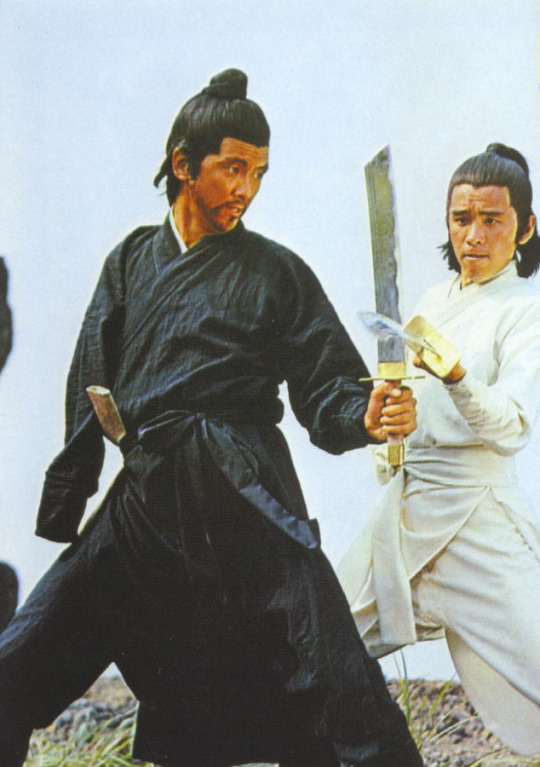
Jimmy Wang Yu as Fang Kang, The One-Armed Swordsman (1967).
This film was a huge hit for the Shaw Brothers studio and director Chang Cheh, and launched Wang into superstardom. He returned as Fang Kong in the sequel, Return of the One-Armed Swordsman (1969). This soon lead to Wang playing various one-armed swordsmen and one-armed boxers in films for several years.
25 notes
·
View notes
Text
Why does it feel like “Fast X” is being made with the intention of spiting the Rock? Hopefully it’s not, but based on what we know of the movie so far:
1) The Rock said he wanted Jason Momoa to play Luke Hobbs’ brother. There were scheduling issues that prevented that from happening, but Rock said he was hoping to bring Momoa in for the next Hobbs and Shaw movie. But now, that can’t happen since Jason was brought in to play the son of Hernan Reyes.
2) The plot of “Fast X” would make a lot more sense if it was centered around Luke Hobbs. Dom might’ve been the mastermind behind the operation, but Hobbs was the one who actually killed Reyes. And Hobbs did it while Reyes was begging for mercy, which makes his action even more cruel. It feels like the studio or Vin Diesel is deliberately trying to erase Hobbs from the narrative. (Side note: Also, it’s not like Dom being the mastermind would make him more guilty of Reyes’ death since Hobbs joined in to make sure the plan worked. And Hobbs did it with the intention of killing Reyes while Dom just wanted the money)
3) This point is admittedly more speculative. While Deckard Shaw doesn’t always have to be connected to Luke Hobbs, it is a bit strange to give Shaw an entire story in F10 without Hobbs, especially since they went on a whole life-changing journey together. Also, let’s not forget that Han Lue was close to Hobbs as well, so it’s weird that they haven’t had a reunion.
#dwayne johnson#the rock#luke hobbs#hobbs and shaw#fast x#fasten your seatbelts#jason momoa#hernan reyes#dante reyes#dominic toretto#fast five#fast x movie#fast x 2023#deckard shaw#han lue#han seoul oh#fast and furious franchise#fast and furious
45 notes
·
View notes
Text
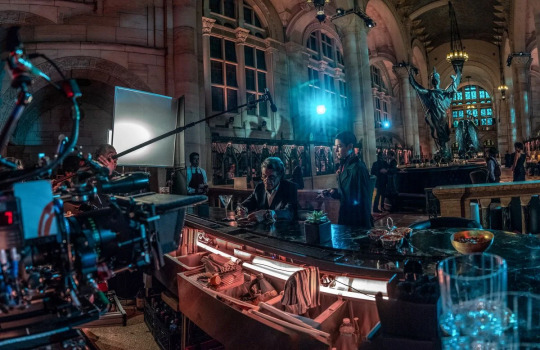
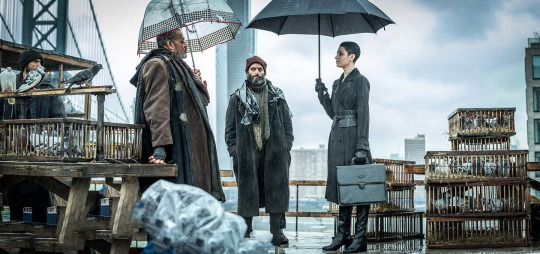

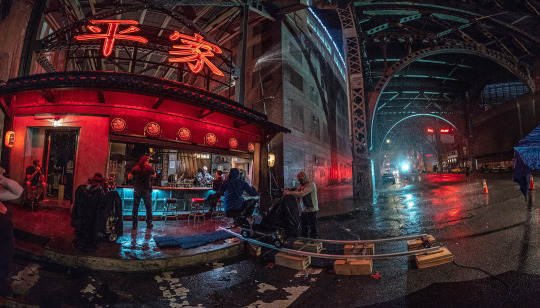
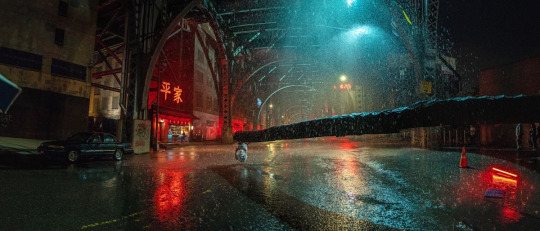
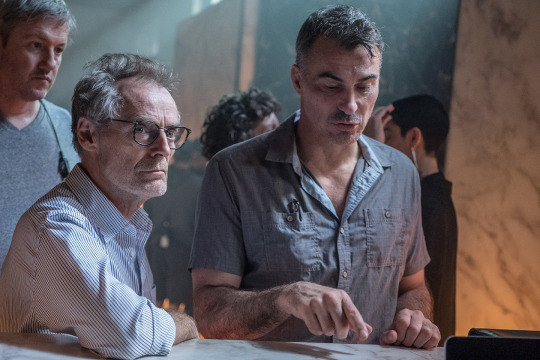
behind the scenes shots ft. akd as the adjudicator, from this article about the cinematography
“In Hollywood, action filmmaking was kind of looked down upon until The Matrix, and then people realized that action could also be part of the story,” [director] Stahelski notes. “I come from a place of loving dance and theater and fine art — action can be all of those things — and one of my favorite painters is Caravaggio.” When he was looking for a cinematographer for John Wick: Chapter 2, Stahelski recalls, “I asked myself, ‘Who paints with light?’ The answer is Dan Laustsen.” In strictly cinematographic terms, Parabellum functions less like an action movie and more like a Hollywood studio musical. The film’s first battle is a close-quarters knife fight in an antique weapons shop, where the camera cuts from wide shot to wide shot, sustaining the action in long takes so that the audience can better appreciate the physical prowess of Reeves’ performance — an elaborate fighting style that combines Japanese judo and jujitsu, Brazilian jujitsu, Russian sambo, Filipino kali, and Muay Thai, more for the benefit of show than for self-defense. “Ninety-nine percent of high-level stunt work is dance — not pirouettes, but how you move your body,” asserts Stahelski, who continues to train stuntpeople with Leitch through their company 87eleven. “I love the aesthetic of motion. A lot of our shots [in Parabellum] are lifted straight from Singin’ in the Rain and West Side Story. We’re mixing Buster Keaton and Charlie Chaplin with Hong Kong cinema from John Woo, Jackie Chan and the Shaw Brothers.” “We wanted to go wider than Hollywood action films normally do and really show off the choreography,” Laustsen agrees. “When the camera, lighting and actors are all moving together, it really is a dance.”
“After we made Chapter 2,” Laustsen notes, “we discussed how we could make 3 even more visually powerful. The main setting was still New York, but we wanted to bring out the city even more forcefully. We decided to shoot all at night, with rain as much as possible. Rain is fantastic because it gives a third dimension to the picture, but it is a challenge to do it, especially in a city like New York.”
The Master Anamorphics’ low-distortion design also prevents dramatic, streaking lens flares, and so the technicians at Arri Rental in Secaucus, N.J., fashioned a flare filter — comprising three strands of nylon fishing line stretched across an empty filter frame — for the XT’s and Mini’s Internal Filter Modules. When a front-of-lens filter produces a flare, Laustsen observes, it “just looks like the light is catching on a piece of flat glass in front of the lens. It’s more beautiful when the flare comes from the lens itself” — and that’s the effect that was replicated with the behind-the-lens nylon lines. “With the filters inside the camera,” the cinematographer adds, “it was also easier for first assistant Craig Pressgrove to do the lens changes.”
The exterior of the Continental was shot in lower Manhattan, but the hotel’s interiors were filmed in downtown Brooklyn, in the former Williamsburgh Savings Bank tower — which now serves as an event space —whose glass-and-wrought-iron front doors open to a 128'-long vaulted banking hall with limestone facing, marble floors, carved teller stations, and a 63'-high ceiling supported by Romanesque columns. For its role as the Continental’s lobby, the hall was furnished by Kavanaugh with two round settees crowned with statues of the Roman war gods Bellona and Mars, a fully-stocked bar, and a lounge on the mezzanine.
Parabellum’s stages were located at Gold Coast Studios in Long Island, N.Y. The first of the production’s two notable stage-bound sets is the Continental’s terrace, for which the Rockefeller Center rooftop garden was used in Chapter 2. The schedule didn’t allow for much time to shoot Parabellum’s scene, which takes place at sunrise. “You cannot make the sun rise [for] a movie,” Laustsen notes wryly. “It’s one or two shots, and then you have daylight, and then you’re fighting to control the light.” So, for more control, the scene was moved onstage, where the set was surrounded with a sectional 45'x350' bluescreen lit with SkyPanel S120s; a 120' black velour curtain was used to control blue spill coming from off-camera. Early-morning ambience was provided by 176 overhead SkyPanel S60s, and the light of the rising sun was simulated by a 20K tungsten Fresnel and a 24K Dino light with medium bulbs, both gelled with 1⁄2 CTS. The other key set built at Gold Coast was the “manager’s office,” a labyrinthine two-story glass-and-steel structure meant to represent the top floors of the Continental, with a 270-degree view of the adjacent skyscrapers. It’s in this space that Wick and Zero ultimately face off mano a mano. “The concept was to create a space where everything is exposed, a place where there are no secrets,” Kavanaugh explains. To help him integrate the lighting into the design of the set itself, Laustsen worked with a virtual-reality computer model based on Kavanaugh’s design. “Chad, Kevin and I had discussions about color — cool lights inside, warm light outside,” says the cinematographer, who wanted what he describes as an “organic” light element for both spaces. The art department therefore added a 35'x14' LED wall to the set’s second floor and a 28'x12' LED billboard to the rooftop; the latter was positioned between the glass structure and a 40'x440' Rosco SoftDrop that was backlit by 150 SkyPanel S60s through Magic Cloth sourced from The Rag Place. Almeida and his rigging crew installed more than a mile of LiteGear Chroma-Correct RGB-Daylite LED LiteRibbon into the glass and steel set, using aluminum profile and plastic diffusers provided by Kavanaugh’s art department. Cues were orchestrated from an ETC Ion Xe console operated by Kent Arneson; Laustsen took advantage of that control to increase the intensity of the light over time — until the very end of the fight, when the two combatants are photographed primarily in silhouette against the LED walls.
Wick literally fights his way through the set — alternately smashing his opponents and being smashed through glass pedestals, walls and floors — until he comes face to face with his nemesis. “We filmed this sequence with a [Chapman/Leonard Hustler IV] dolly and a Libra head, a Steadicam, and a couple of crane shots [with a MovieBird 45 and Aerocrane jib],” Laustsen details. “We didn’t want to go handheld because of all the straight lines. It would be a much more powerful look for the film if the frame was always parallel to the set.” “When we did bring in lights for the close-ups, we used Arri SkyPanel S60s and Astera AX1 LED tubes that we could attach virtually anywhere using magnets and clips,” Almeida adds. “The Astera tubes worked out great because they’re easy to hide, and if you saw a reflection, it just looked like the lighting that was built-in already.”
#all the pictures and quotes are neat & interesting....check out that article#further talk about color choices & tools & techniques....idk too much about film production stuff but i always think it's interesting#and like cinematography being pointed out & discussed in general lol as the end result & the process behind it#only one quote in there specifically mentions the adjudicator (not ft. here b/c it's just a quick plot point mention)#but others are included here b/c it's relevant. homemade lens flare? happens when their ride first swings up like Their iconique flair#didn't include quotes about the theater set used for when they show up walking down the aisle like augh!! anyways check out the article fr#asia kate dillon#the adjudicator
4 notes
·
View notes
Text
All Shaw Brothers All The Time! Volume 5 Quick Thoughts
Shout! Studios Just when fans thought they couldn’t get enough of the movies from The Shaw Brothers, one of two new collections is here! Volume Six is slated for, and I’ll have a separate article outlining what’s coming in that set. I really appreciate the fact Shout! Studios is keeping the love for wuxia alive. Volume 5 is now available for purchase on their website (or on Amazon). While I have…

View On WordPress
0 notes